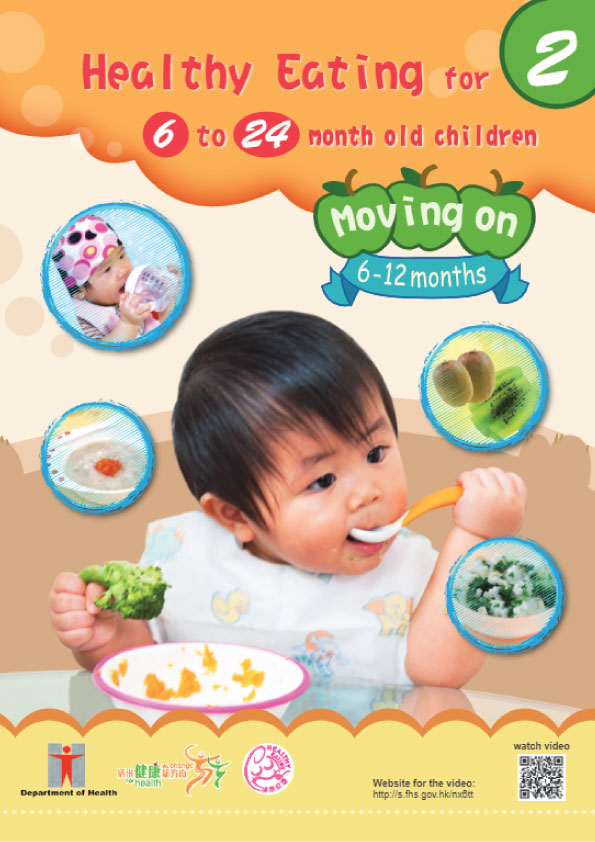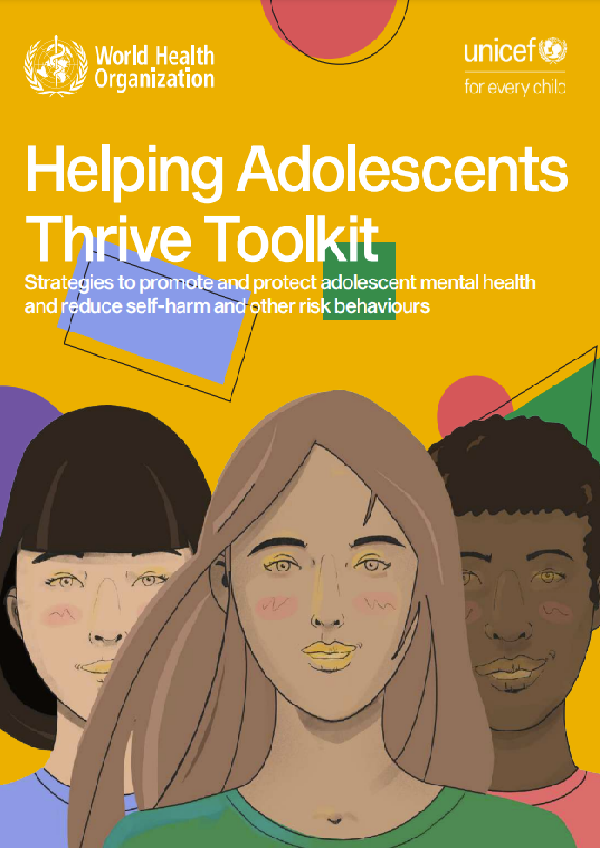Baby’s food and diet
(Watch related video: http://s.fhs.gov.hk/nx6tt)
After your baby gets used to taking soft food from a spoon, you should introduce a variety of new foods one at a time. Choose foods that are rich in iron.
- Try foods of different textures according to your baby’s ability to chew;
- Breastmilk or formula milk is still his main food. As he eats more solid food, he will require less milk;
- Babies younger than 1 year old accept new food more readily. Take this opportunity to let him experience a wide range of foods.
Introducing new food
- Offer new food in the morning or at noon. This allows you to watch for any food allergies;
- Introduce new foods one at a time. Begin with 1 to 2 teaspoons and let your baby try the food for 2 to 4 days;
- Add the new food into infant cereal or congee, or offer it to your baby directly.
Tips: Choose food for your baby from your family’s food basket.
My baby is not willing to eat the new food. What can I do?
- Your baby may show some strange facial expressions when tasting a new food. This does not mean that he refuses to eat the food;
- If he opens his mouth for the food, continue to feed him;
- If he does not want to eat, try again in 1 to 2 weeks;
- Some babies need to try 8 to 15 times before they will eat a new food, so be patient. Do not give up after only 2 or 3 tries.
Trying foods of different textures
(Watch related video: http://s.fhs.gov.hk/qq288)
Start with smooth puree, then move to mashed food with small soft lumps, and then to minced or chopped food. The gradual change in food texture helps your baby to learn to chew.
Babies differ in their development. Parents should give food of appropriate textures according to the babies’ ability to chew.
When your baby can eat chopped food, he can share food with the family.
To learn more about food textures, please refer to the “7-day Healthy Meal Planning Guide for 6 to 24 month old children“.
Babies can do it!
- Most 8-month-old babies can handle finely minced food;
- They can chew with their gums;
- If they are only fed purees, they may have problems eating food of coarse texture in the future.
How do babies react when they first try thick or lumpy food?
- At first, babies may eat less or eat more slowly;
- When the food is so lumpy and tough that your baby cannot chew it. He will spit it out, or even gag;
- If this happens, prepare the food in a finer texture and let your baby get used to it gradually.
Beware of choking hazards
- Do not give babies food that is small and hard, like sweets, or food that is sticky, such as glutinous rice dumplings;
- When you give your baby food that is small and roundish, such as grapes or cherries. remove the seeds and cut the food into small pieces first;
- Be careful to remove the bones from meat or fish.
Babies’ bowel movements
As your baby eats more solid food, his bowel movements may change. The stool may become thicker and have tiny food pieces in it. If your baby passes runny stool or there is blood or mucus, bring him to see a doctor as soon as possible.
Food and nutrients
Eating a variety of foods
As your baby eats more solid food, you should include a variety of foods in his meals. This ensures that he will enjoy well-balanced nutrition.
Main sources of nutrients:
Grains (e.g. rice, noodles, pasta, bread, oatmeal)
Grain provides carbohydrates, proteins, several B vitamins (excluding vitamin B12) and magnesium.
Whole grain foods such as brown rice and whole wheat bread provide more vitamin E and dietary fibres. Offer these foods to babies when they can chew better.
Eggs or meat (e.g. fish, chicken, pork, beef, mutton, liver, seafood)
Eggs or meat provide protein, fat, cholesterol, iron, zinc, magnesium, vitamin B and B12. Fish provides more unsaturated fat; fatty fish also contains vitamin D. Avoid eating fish of high levels of methylmercury. Egg yolk and liver are rich in vitamin A and contain vitamin D (Avoid eating liver too often).
Dry beans and other bean products (e.g. red kidney beans, chickpeas, red beans, cowpeas, and other bean products)
Dry beans and other bean products provide protein, carbohydrates, several B vitamins (excluding vitamin B12), iron, zinc and dietary fibres. Tofu made by the traditional method provides calcium.
Vegetables (e.g. green leafy vegetables: choy sum, bok choy, broccoli, Chinese kale, leaf mustard, Chinese spinach, etc.)
Vegetables are rich in carotene, vitamin C, folic acid, dietary fibres, potassium and minerals. Green leafy vegetables are rich sources of iron, calcium, vitamin E and K.
Fruits (e.g. bananas, pears, apples, grapes, watermelons)
Fruits provide vitamin C, folic acid, dietary fibres, potassium and minerals. Dark yellow fruits, such as papaya, mango, contain carotene. Example of vitamin C rich fruits are kiwifruits, strawberries, oranges, papaya, persimmons.
Milk and milk products (e.g. cheese, yoghurt, milk)
Milk and milk products provide protein, saturated fat, calcium, vitamin A and vitamin B12.
Cow’s milk should not replace breastmilk or formula milk for babies under 1 year old as their main source of food.
For more nutritional information about food, please refer to the “7-day Healthy Meal Planning Guide for 6 to 24 month old children”.
Water
- After eating solid food, offer babies boiled water to drink so that they can get used to it;
- Babies usually drink a few sips of water each time and that is enough;
- Do not replace boiled water with glucose water, juice or sweet drinks. This protects babies from developing a bad habit of drinking sugary drinks.
Babies need iron-rich foods
After 6 months of age, babies need more iron. They should eat adequate amounts of iron-rich food daily.
- Rice or wheat cereal with iron added is a good choice;
- Iron in meat, fish and egg yolk is easier to absorb;
- Vitamin C in fruits helps the body to absorb the iron in green leafy vegetables and dry beans;
- When your baby eats meat or egg yolk and vegetables daily, you can gradually replace the rice cereal with congee.
Iodine is essential for the development of the nervous system. What foods provide iodine?
- Kelp, seaweed (They have a high iodine content, so eating a small amount is enough.);
- Iodised salt;
- Seawater fish, seawater shrimp, shellfish;
- Milk, egg yolk.
DHA helps in the development of babies’ nervous systems. What foods contain DHA?
Fish is the main source of DHA. Salmon, sardines and halibut are rich sources. Golden thread, Big eyes and Pomfret also provide DHA.
Vegetable oil
- When cooking for your baby, add a small amount of vegetable oil;
- This provides your baby with energy, and also helps him absorb fat-soluble vitamins;
- Vegetable oils provide essential fatty acids that are needed for growth and the development of the brain;
- Various types of vegetable oils differ in their composition. They can be used in turns or in mixtures.
Eating a variety of foods helps us maintain good health.
How to arrange daily meals for your baby
Babies at 6 to 8 months
Milk is the main food. Your baby needs about 5 milk feedings per day.
For 2 to 3 of those feedings, offer him solid food first and then give him milk.
Introduce various nutritious foods to your baby.
Feeding solid food
- At first, offer babies 1 to 2 tablespoons of solid food;
- As babies get used to chewing and swallowing, they will eat more solid food;
- Some babies are more interested in eating solid food at the beginning of a meal. They may soon get tired from chewing and will not eat much. If so, give them milk.
Feeding breastmilk or formula milk
- Feed babies milk according to their needs and stop when they show signs of fullness;
- As babies eat more solid food, they take less milk and need milk feedings less often.
When is it appropriate to replace one milk feeding with a meal of solid food?
If grains, veggies, meat (or fish, eggs) and oil are all provided in most of your baby’s meals, and for several days he does not want to take milk after eating a meal, he can skip one milk feeding.
Note: Make sure your baby eats the meat lumps to obtain sufficient nutrients.
Babies at 9 to 11 months
Your baby needs about 5 feedings a day. In 2 to 3 meals, he eats mainly solid food.
Feeding solid food
- Most babies at 8 to 9 months can have 1 to 2 milk feedings replaced by solid food;
- Babies eat 2 to 3 main meals of solid food every day;
- You can also give your baby some fruits once or twice daily as a snack.
Feeding breastmilk or formula milk
- Continue breastfeeding;
- Babies who are bottle fed generally need about 2 to 3 milk feedings and around 500 to 600 ml of milk per day;
- Feeding too much milk and too often may reduce your baby’s appetite for other food.
Feeding times
- At 6 months of age, most babies already have a regular feeding pattern. They need a feed about every 3 to 4 hours. Most of them can sleep through night, no longer require a night feeding.
- Babies start to eat with their families. They gradually adapt to eating according to the family mealtime schedule.
- At about 1 year old, parents should set up a regular mealtime schedule for their babies.











